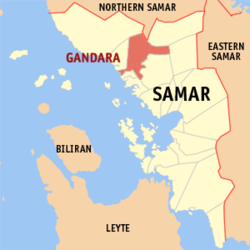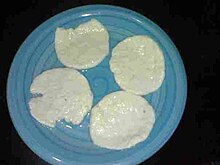
Samar, officially the Province of Samar, formerly named Western Samar, is a province in the Philippines located in the Eastern Visayas region. Its capital is the city of Catbalogan. It is bordered by Northern Samar, Eastern Samar, Leyte and Leyte Gulf, and includes several islands in the Samar Sea. Samar is connected to the island of Leyte via the San Juanico Bridge.

Balangiga, officially the Municipality of Balangiga, is a 4th class municipality in the province of Eastern Samar, Philippines. According to the 2020 census, it has a population of 14,341 people.

Abuyog, officially the Municipality of Abuyog, is a municipality in the province of Leyte, Philippines. According to the 2020 census, it has a population of 61,216 people.

San Julian, officially the Municipality of San Julian, is a 5th class municipality in the province of Eastern Samar, Philippines. According to the 2020 census, it has a population of 14,800 people.

Almagro, officially the Municipality of Almagro, is a 5th class municipality in the province of Samar, Philippines. According to the 2020 census, it has a population of 9,273 people.

Calbayog, officially the City of Calbayog, is a 1st class component city in the province of Samar, Philippines. According to the 2020 census, it has a population of 186,960 people.

Calbiga, officially the Municipality of Calbiga, is a 4th class municipality in the province of Samar, Philippines. According to the 2020 census, it has a population of 23,310 people. The town is famous for the Langun-Gobingob Caves which is the largest cave system in the Philippines, reputed to be the second largest in Asia and the world's third largest karst formation.

San Jorge, officially the Municipality of San Jorge, is a 4th class municipality in the province of Samar, Philippines. According to the 2020 census, it has a population of 17,579 people.

San Jose de Buan, officially the Municipality of San Jose de Buan, is a 4th class municipality in the province of Samar, Philippines. According to the 2020 census, it has a population of 7,767 people.

San Sebastian, officially the Municipality of San Sebastian, is a 6th class municipality in the province of Samar, Philippines. According to the 2020 census, it has a population of 8,704 people.
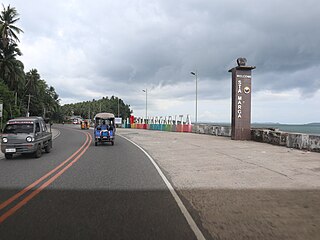
Santa Margarita, officially the Municipality of Santa Margarita, is a 4th class municipality in the province of Samar, Philippines. According to the 2020 census, it has a population of 26,816 people.

Tagapul-an, officially the Municipality of Tagapul-an, is a 5th class municipality in the province of Samar, Philippines. According to the 2020 census, it has a population of 8,805 people.

Tarangnan, officially the Municipality of Tarangnan, is a 4th class municipality in the province of Samar, Philippines. According to the 2020 census, it has a population of 25,713 people.

Allen, officially the Municipality of Allen, is a 5th class municipality in the province of Northern Samar, Philippines. According to the 2020 census, it has a population of 25,228 people.
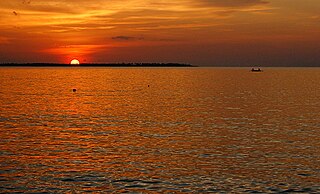
Laoang, officially the Municipality of Laoang, is a 2nd class municipality in the province of Northern Samar, Philippines. According to the 2020 census, it has a population of 61,607 people.

Lope de Vega, officially the Municipality of Lope de Vega, is a 4th class municipality in the province of Northern Samar, Philippines. According to the 2020 census, it has a population of 14,690 people.
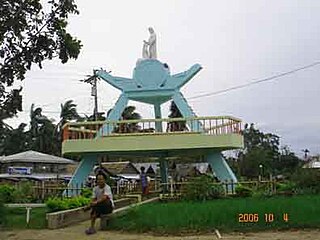
Pambujan, officially the Municipality of Pambujan, is a 4th class municipality in the province of Northern Samar, Philippines. According to the 2020 census, it has a population of 35,532 people.
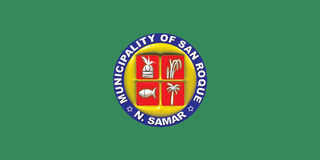
San Roque, officially the Municipality of San Roque, is a 4th class municipality in the province of Northern Samar, Philippines. According to the 2020 census, it has a population of 29,882 people.

Catbalogan, officially the City of Catbalogan, is a 5th class component city and capital city of the province of Samar, Philippines. According to the 2020 census, it has a population of 106,440 people.
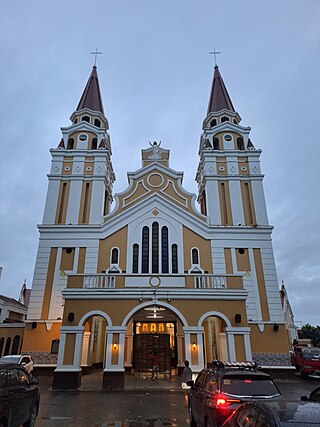
The Metropolitan Cathedral of Our Lord's Transfiguration, also known as Palo Metropolitan Cathedral or simply Palo Cathedral, is a Roman Catholic church located at Palo, Leyte, in the Philippines belonging to the Vicariate of Palo under the Metropolitan Archdiocese of Palo.

